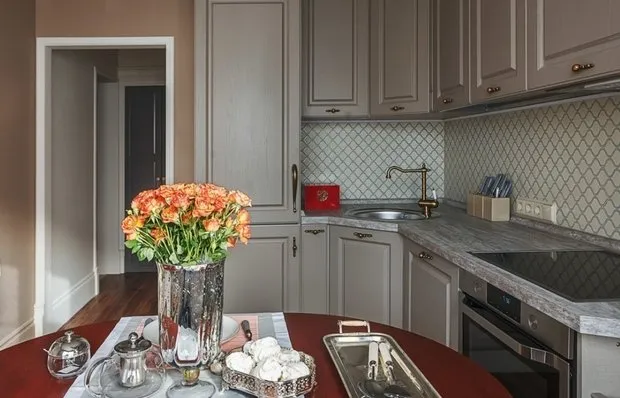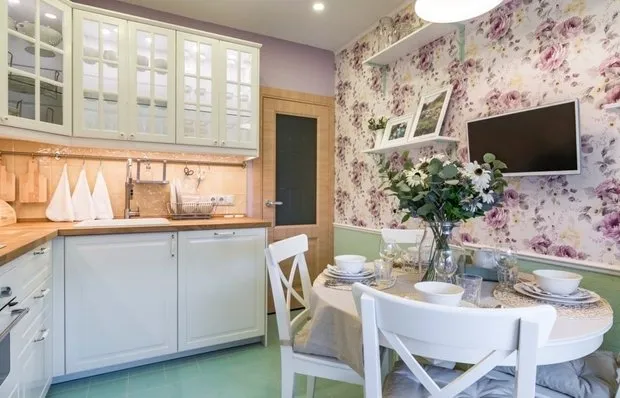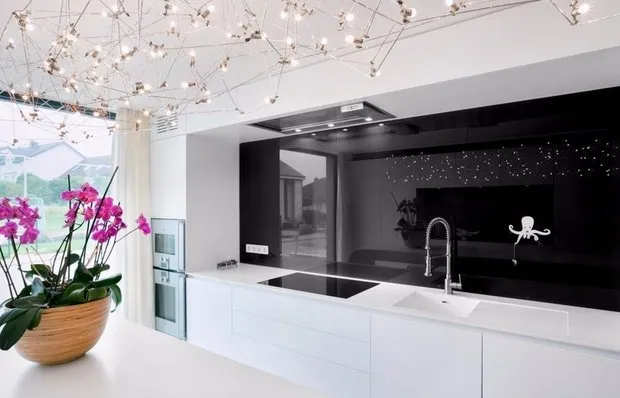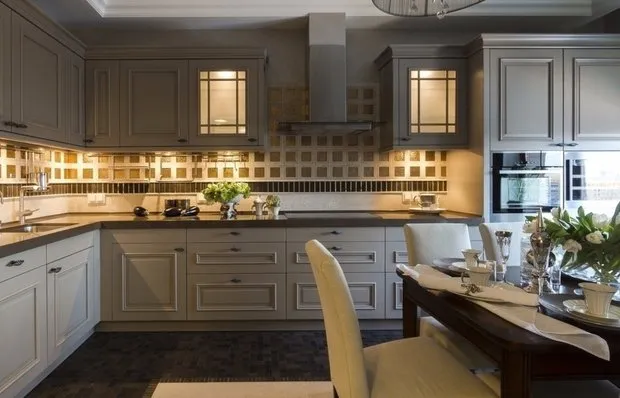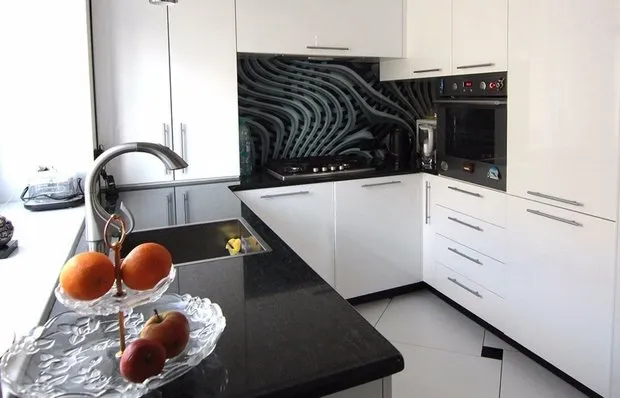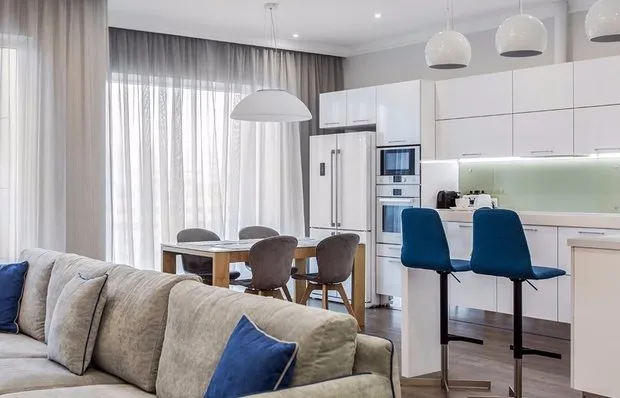There can be your advertisement
300x150
Artificial Stone in Hallway Interior
Artificial stone became popular 20 years ago. Since then, designers have been developing apartment and house sketches where the entire apartment is decorated with stone elements either fully or partially.
Decorative stone is always unique and stylish; it gives a sense of perfection to the hallway, and when combined with finishing or wallpapers, it looks like a painting. The secret lies in proper application and design, which should be planned and thought out before starting renovation work.
Advantages and Disadvantages of Artificial Stone in Hallway Decoration
Using and decorating the hallway with artificial stone should be approached carefully and attentively. Like any finishing material, stone has its pros and cons that must be taken into account.
Pros:
Lightweight material and convenient shape make decoration simple;
It blends well with all additional materials – wallpapers, paint, whitewash;
Variety of color palette, texture, and surface finish offer decoration options for every taste;
Easy maintenance does not require much effort; the stone easily tolerates regular soapy water and damp cloth;
Not susceptible to negative changes, even under high humidity and abundant sunshine;
Practicality and convenience of use;
Smooth and pleasant to touch, the material visually enhances the geometry of the room;
Long service life – up to 15 years;
High quality and absence of harmful substances. Artificial stone can be used in any space;
Low material cost.
Cons:
Water permeability. The stone needs to be treated with a special solution;
Difficulties in laying and finishing;
Cost can vary depending on the quality of the material.

Decorative Stone in Hallway Interior
Corner Decoration
In small hallways, designers recommend using artificial stone fragments for decoration. Especially effective is the decoration of visible angles in the hallway. When combined with wallpapers or decorative whitewash, the material provides contrast and creates a unique style in the interior.
Wall Decoration
Depending on the project and layout of the hallway, professionals suggest considering the option of wall decoration with artificial stone. In such a case, the wall decorated with stone becomes a background for highlighting decorative elements: an unusual-shaped mirror framed beautifully will draw attention. A panel or art object will enhance the wall and create a cozy corner. It is important not to forget that other walls in the hallway should remain monochrome and light.
Arc Decoration
Regardless of the apartment style, whether it's modern or Provence, artificial stone creates a contemporary hallway or ages it. Inter-room arches in the space look exceptionally refined. Decorated arch openings highlight the geometry of the space and make the hallway resemble a fairy-tale painting. The variety of colors allows matching the arch color to the wall color. Alternatively, one can choose a darker-toned material, which creates a contrast against light wallpapers and enhances the design concept.
Flooring
A good way to decorate a hallway is using artificial stone in combination with other materials. Such decoration makes the corridor beautiful, noble, and dignified. The practicality of such flooring plays a significant role. Before laying, it is necessary to draw up a detailed design of the floor pattern, i.e., how the image on the floor will be created. The variety of patterns and shades makes it easy to choose what is needed. The photo below shows various hallway decoration options with stone.

Types of Artificial Stone
Flexible Stone
This type is new to the market. Low cost and ease of installation have made it popular. It is suitable for both external and internal decoration of apartments and houses. The technology was invented in Germany over 10 years ago. In Russia, decorative elements are used relatively recently. The material has several significant advantages that ensure its popularity among buyers:
- Minimal thickness – 4 mm. Can be used in cladding almost any complex and intricate surfaces, angles, and non-standard constructions;
- Waterproofing. The material withstands high air humidity and water. Its application area is quite broad;
- Compliance with ecological requirements, safety;
- Fire resistance. Does not burn;
- Easy care. Cleaning is done easily – with a sponge or cloth;
- Convenient shape of production. Sheets are easy to lay down;
- The structure allows creating a seamless surface without joints;
- Resistance to temperature fluctuations. The material is used in various climatic conditions;
- Light transmission of the stone coating allows for unique, eye-hidden lighting fixtures. The feeling of soft light creates comfort;
- Uniqueness of the image of stone layers. The result is a unique pattern that is hard to replicate.
Gypsum Stone
Decorative gypsum stone was invented in ancient times. Compared to the cement version, the weight of this material is significantly lower. Its practicality in room finishing is no less than that of the cement version. The material is made from gypsum and water. Sometimes manufacturers add sand, a surfactant solution, and various modifiers that improve the stone quality. Among its advantages:
- Light weight. The stone can be used to decorate thin partitions and walls;
- High strength and durability;
- Easy processing of the material during installation;
- Diverse shapes – tiles, bricks. The choice for interior finishing is vast;
- Non-toxicity. The material does not emit hazardous vapors and is capable of 'breathing';
- Sound and thermal insulation;
- Excellent compatibility with other materials and textures;
- Easy maintenance and cleaning.
The drawbacks include poor moisture resistance. Specialists do not recommend decorating walls in bathrooms or rooms with high humidity.
Cement Stone
Artificial stone made from cement is used for both interior and exterior decoration. In addition to cement, the material composition includes sand, hydrophobic mixtures, coloring pigments, and reinforcing additives. Advantages of artificial stone based on cement:
- Material strength makes the stone resistant to wear;
- High moisture resistance;
- Fire safety;
- Resistance to any light and chemical impacts makes it suitable for use in any room;
- Ability to restore and adjust the decorated wall if needed;
- A wide variety of forms imitating natural stone provides a broad range of pattern choices.
The downside is its large weight.
Agglomerate Stone
Quartz agglomerate has proven itself well on the market. This strong artificial material is a combination of artificial and natural materials. Notable advantages of agglomerate over other materials:
- Safety ensures high popularity;
- Strength and durability. Agglomerate does not crack or break apart;
- Low cost, which allows staying within budget;
- High moisture resistance. The material does not promote mold growth;
- Resistance to any temperature fluctuations and chemical compositions;
- Visual appeal of the material. Homeowners can easily create a unique composition using surface reflections;
- Diverse shapes and sizes of agglomerate are convenient for practical use;
- Practicality in daily care. No expensive cleaning products required.
When transporting the material, attention is necessary to avoid cracks and chips. In winter weather, the material does not provide warmth. These properties can be considered minor drawbacks.
Wild Stone
Wild stone is considered a practical material for interior decoration by designers. The use of this material started in ancient times. Today, natural wild stone can decorate almost any interior and create a fairy-tale atmosphere. Significant advantages in its use:
- Lightweight material. This allows easy handling;
- Material safety. Does not contain harmful substances for health;
- Strength and durability in use;
- Moisture resistance. Also resistant to corrosion and various temperature fluctuations;
- The surface that is clad does not require special preparation;
- Works well with any finishing materials;
- Can be used in any style.
Cost is probably the only significant disadvantage of this material.
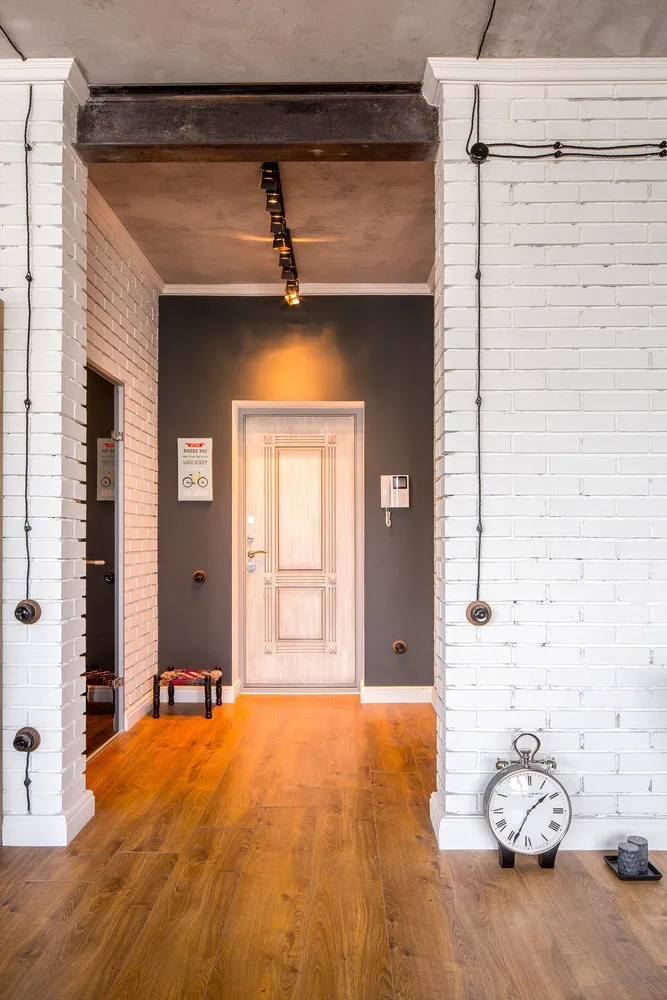

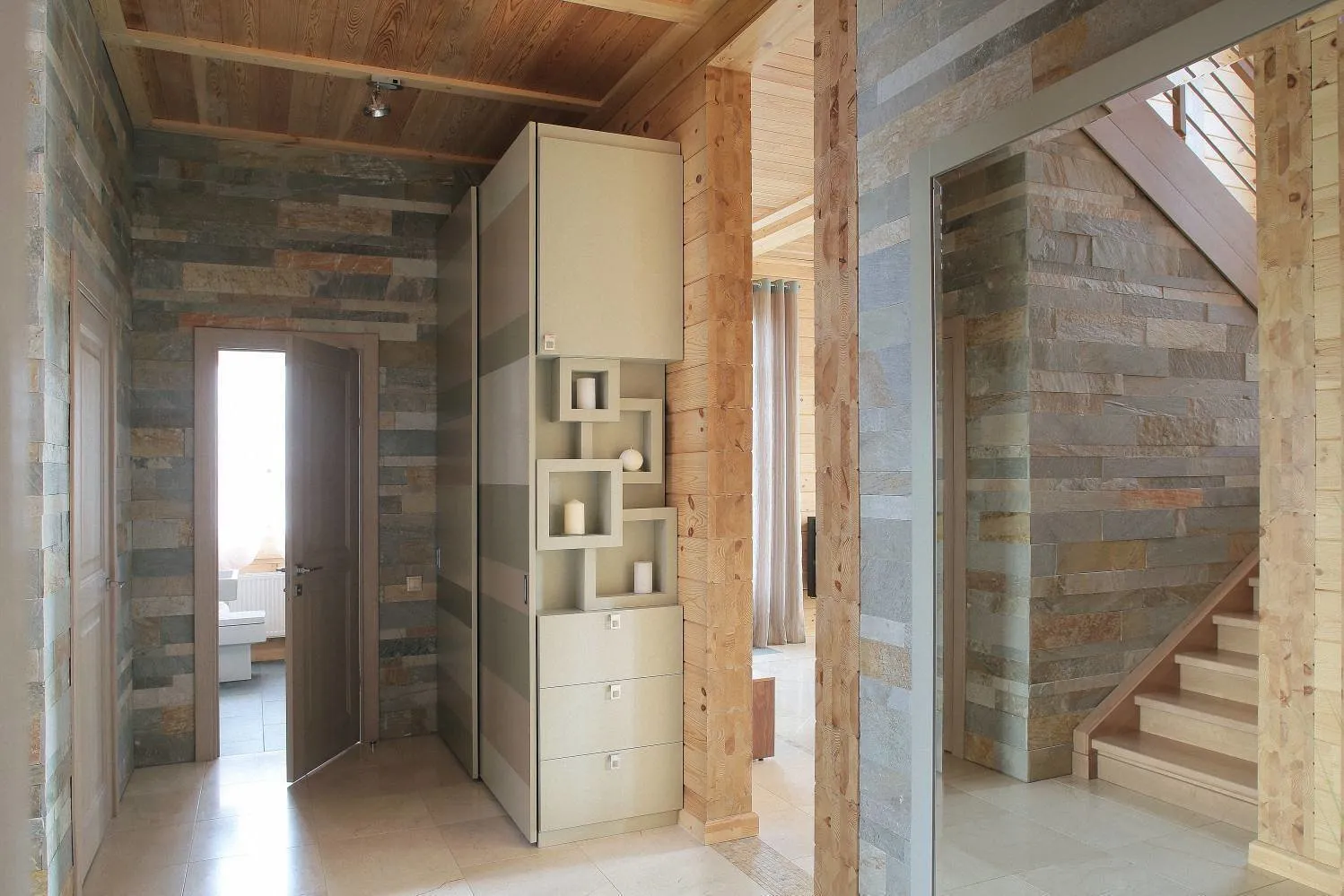
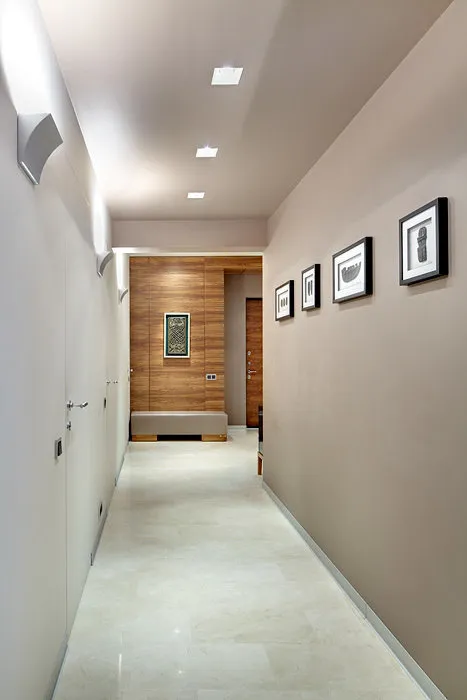
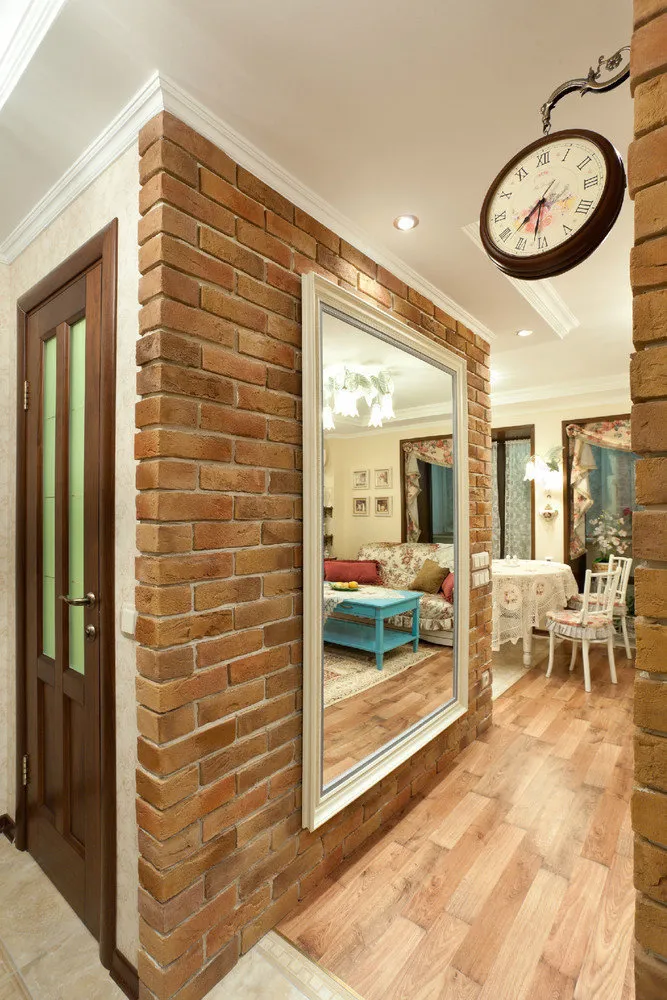

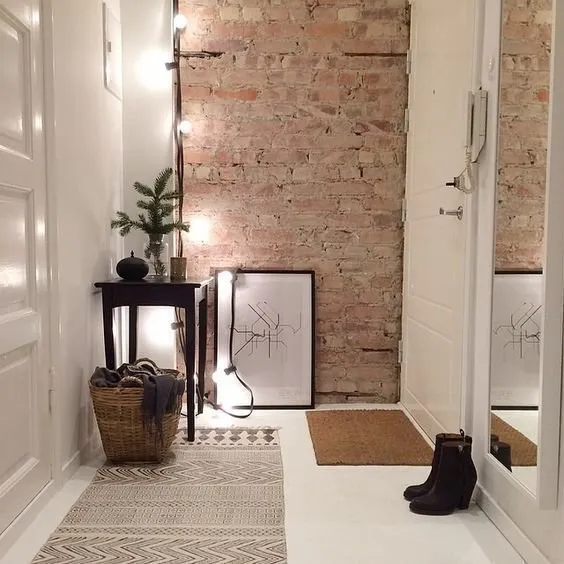
Color, Size, Texture
Decorating a hallway with decorative elements requires careful planning of the overall style and color palette of the interior. Light tones can make the enclosed hallway space appear larger and visually expand it. Since natural light is often absent in such spaces, it is necessary to fill the space with light.
Considering various forms, one can highlight:
Boulder type. They resemble boulders and pebbles;
Crushed type. They visually resemble unprocessed pieces;
Mosaic type. All elements are carefully selected according to size and color;
Brick type. The shape looks like brick masonry;
Tiled type. This form imitates polished masonry.
In a small hallway, specialists recommend choosing one variant of the stone element and combining it with whitewash/wallpaper/plaster. Combining different styles of stones simultaneously will lead to chaos and restrict the space.
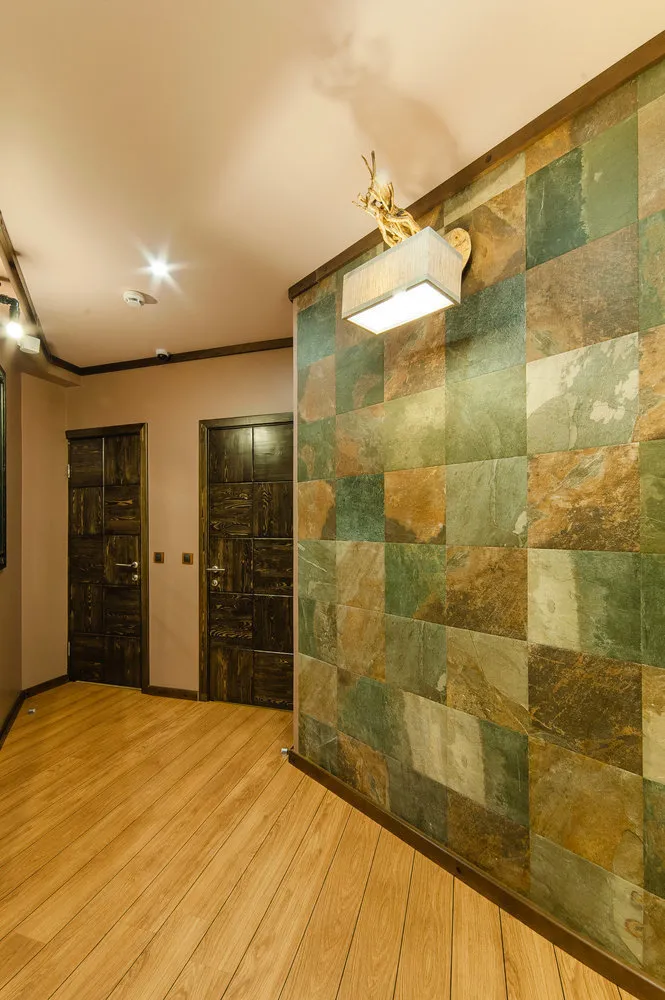



Unusual Variants Proposed by Designers
Modern designers recommend following your intuition and adhering to only simple tips. Decorative elements can be arranged in a chaotic manner. It is not necessary to follow strict lines. Covering all walls is excessive. An interesting variant is decorating the doorway of the hallway with stone. A mirror framed in stone looks stylish and unusual. A place for a hook or a niche for a wardrobe decorated with stone will attract attention and surprise with its uniqueness. If there is space in the interior for photographs or paintings, stone decoration will only complement the background.
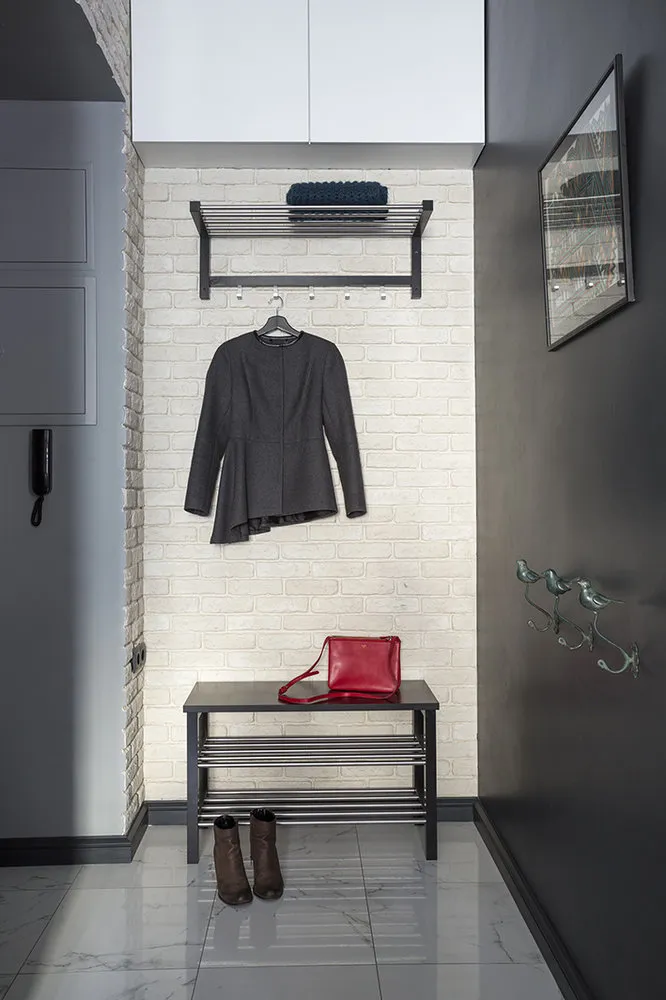

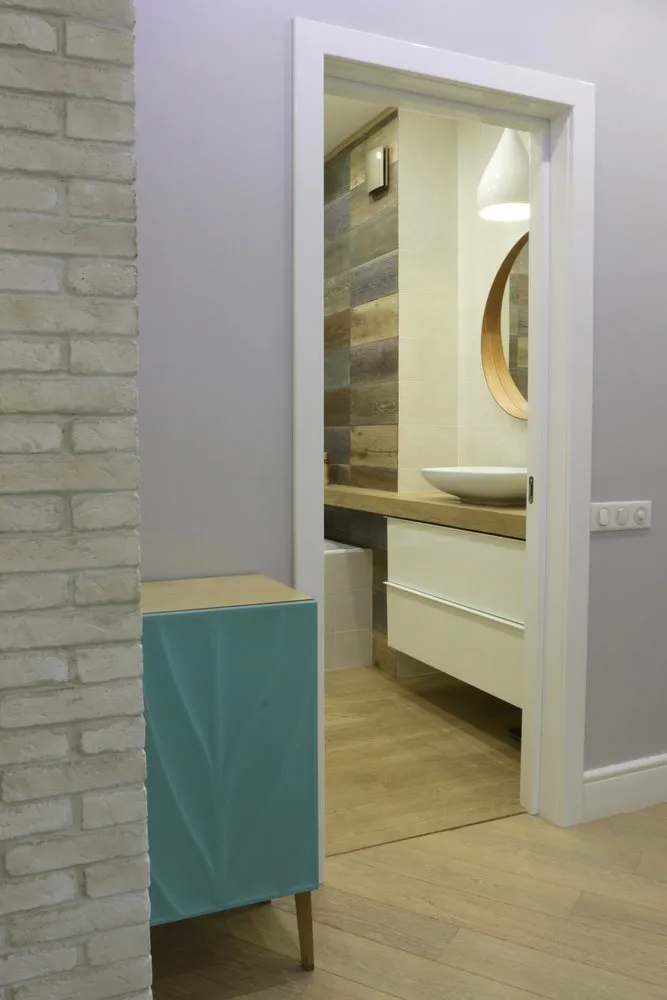


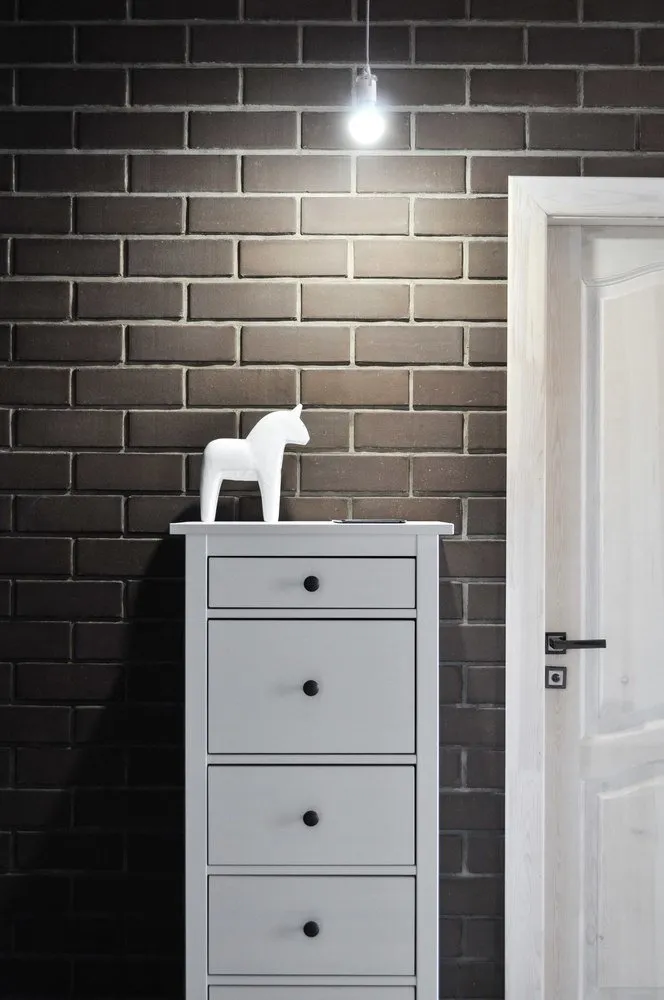

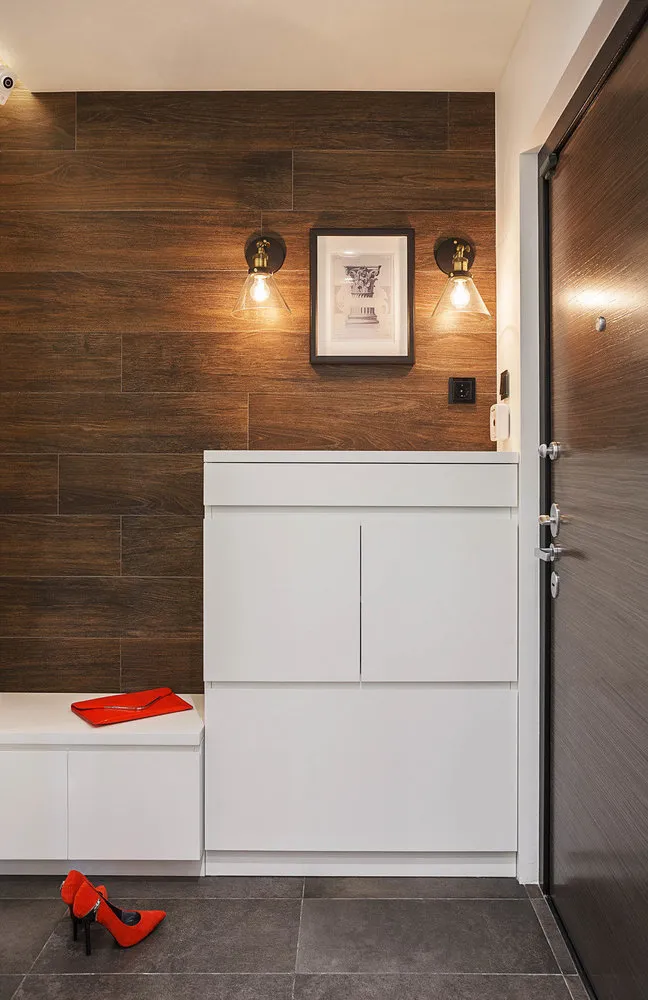


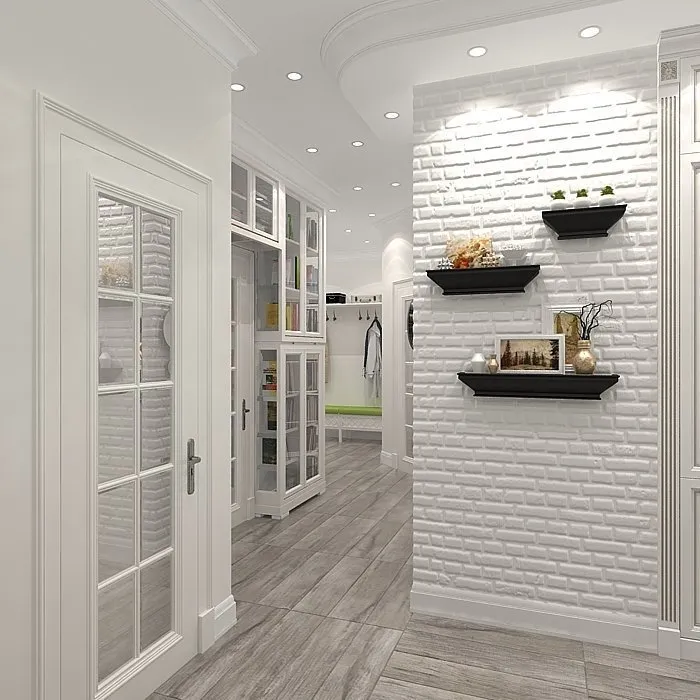

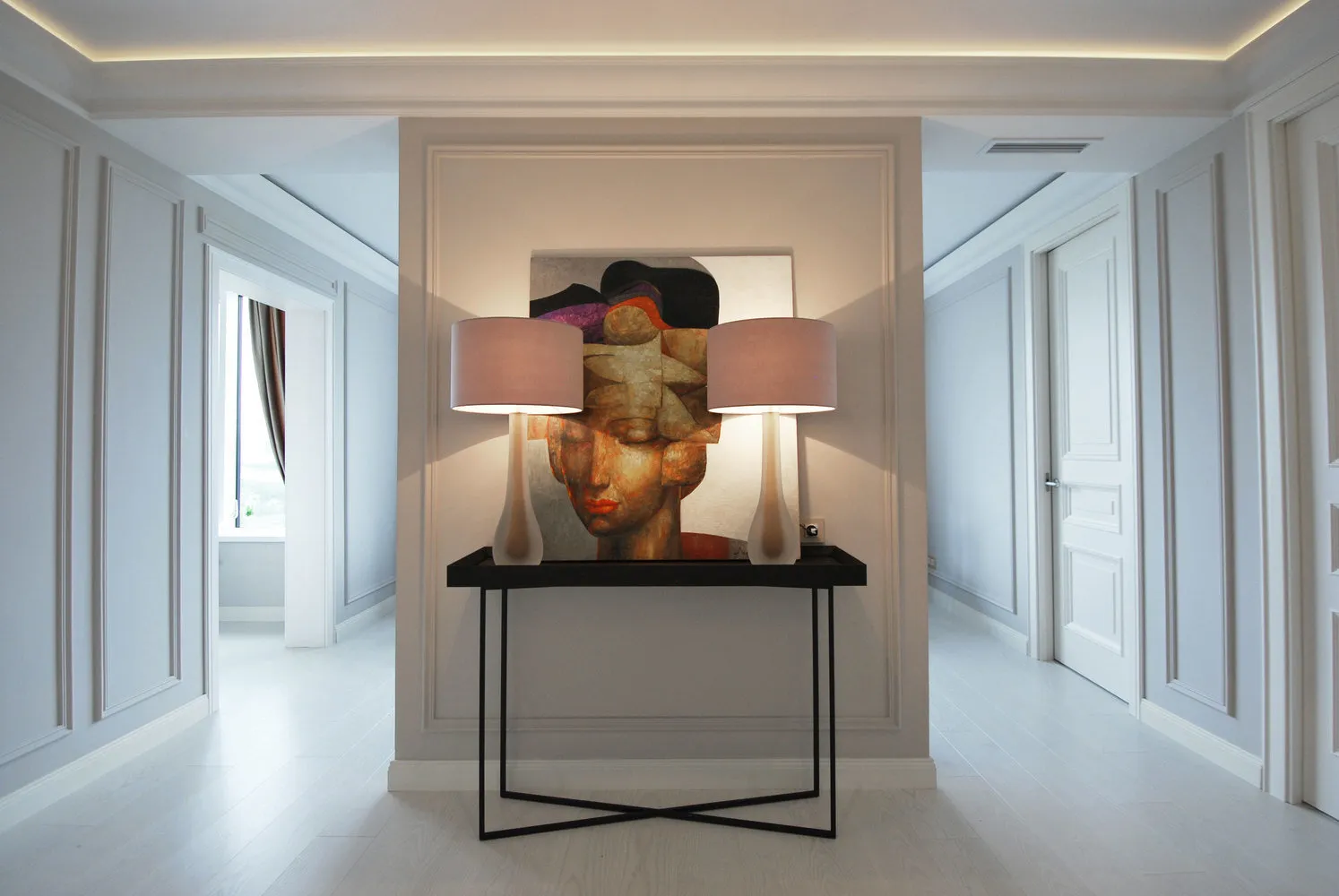
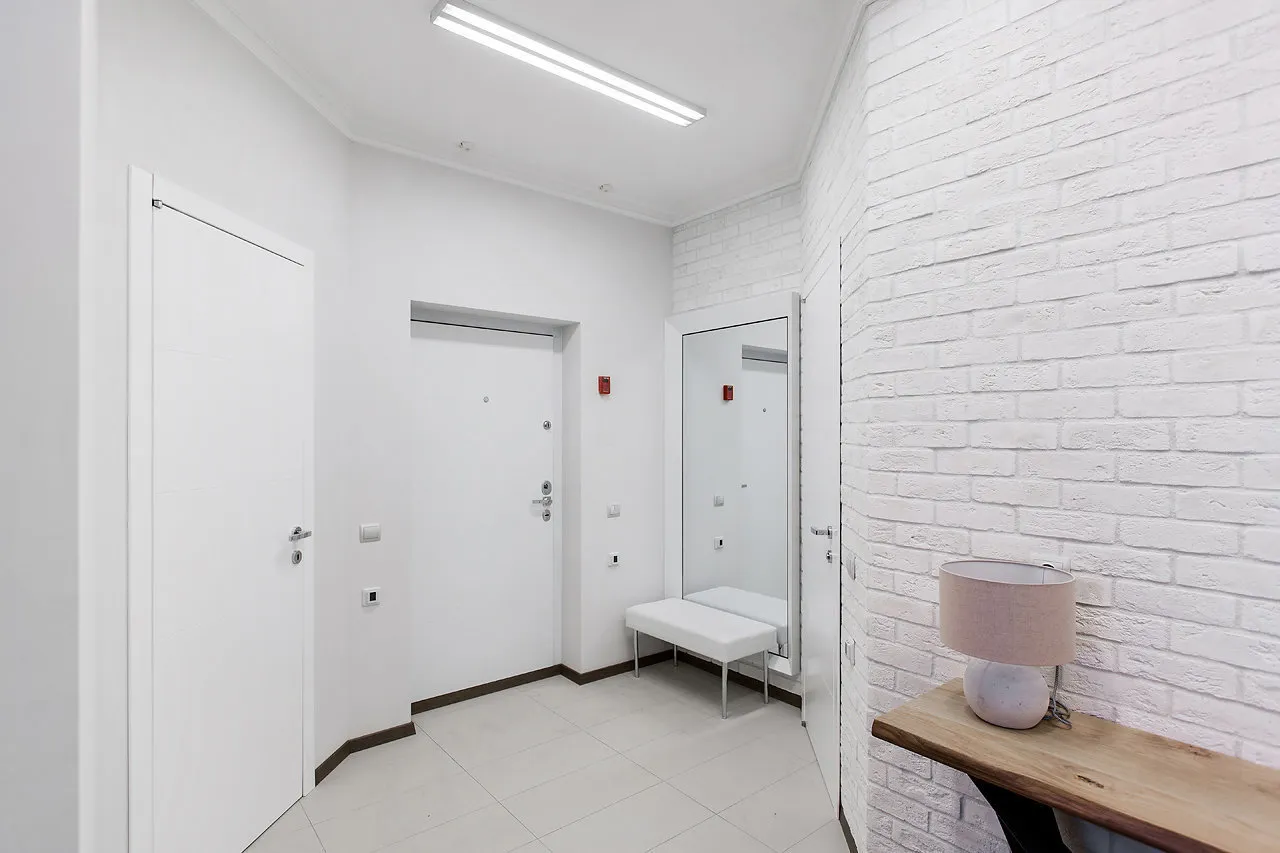
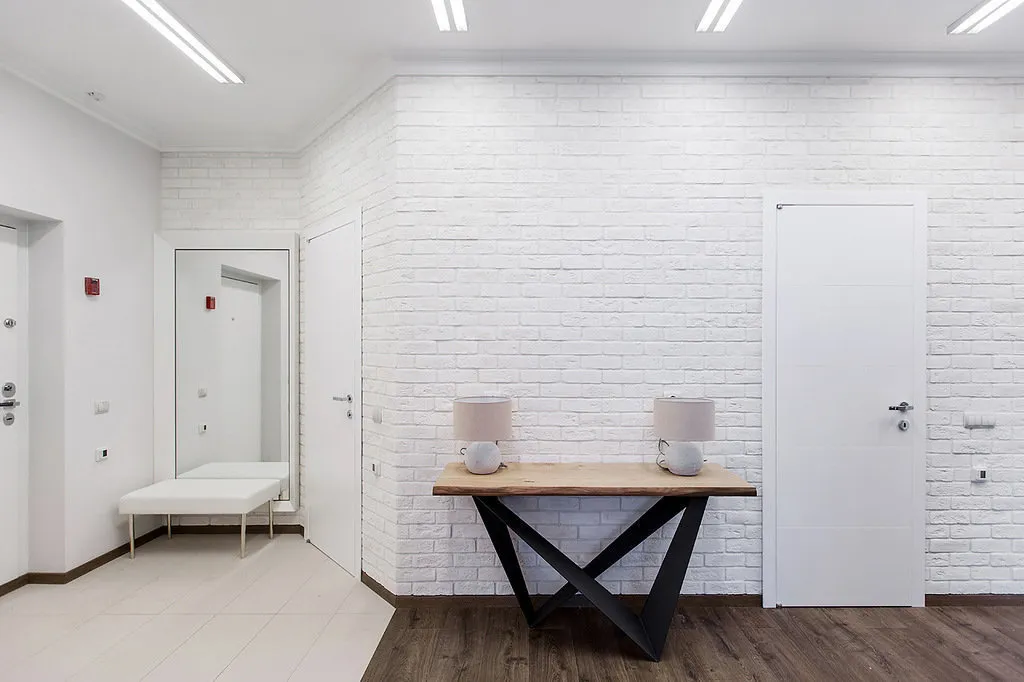
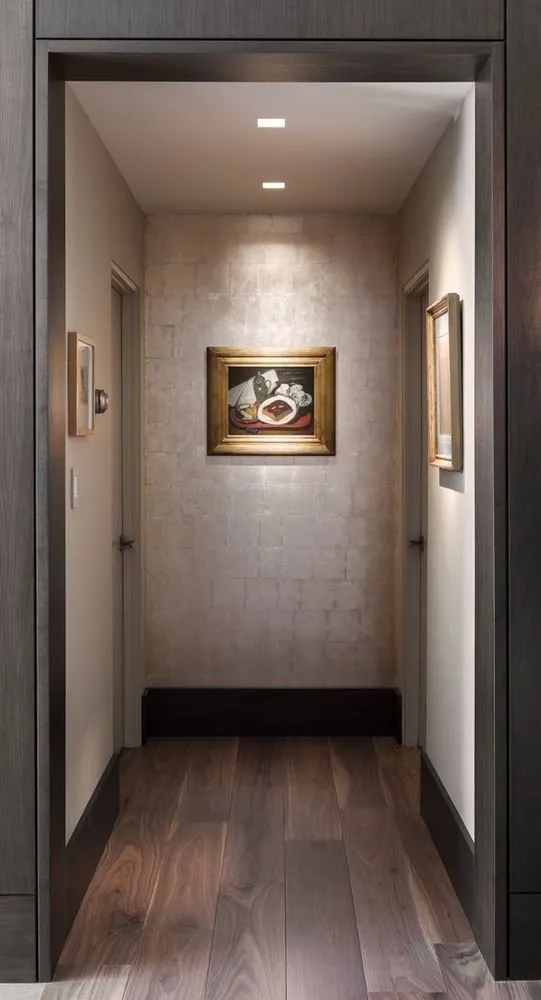
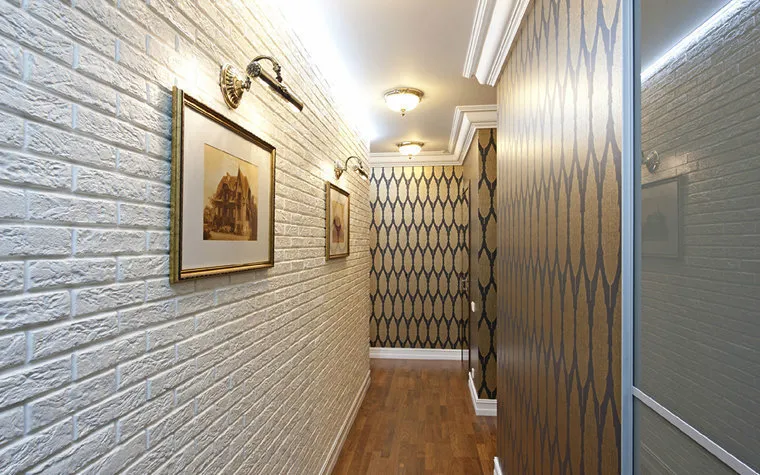
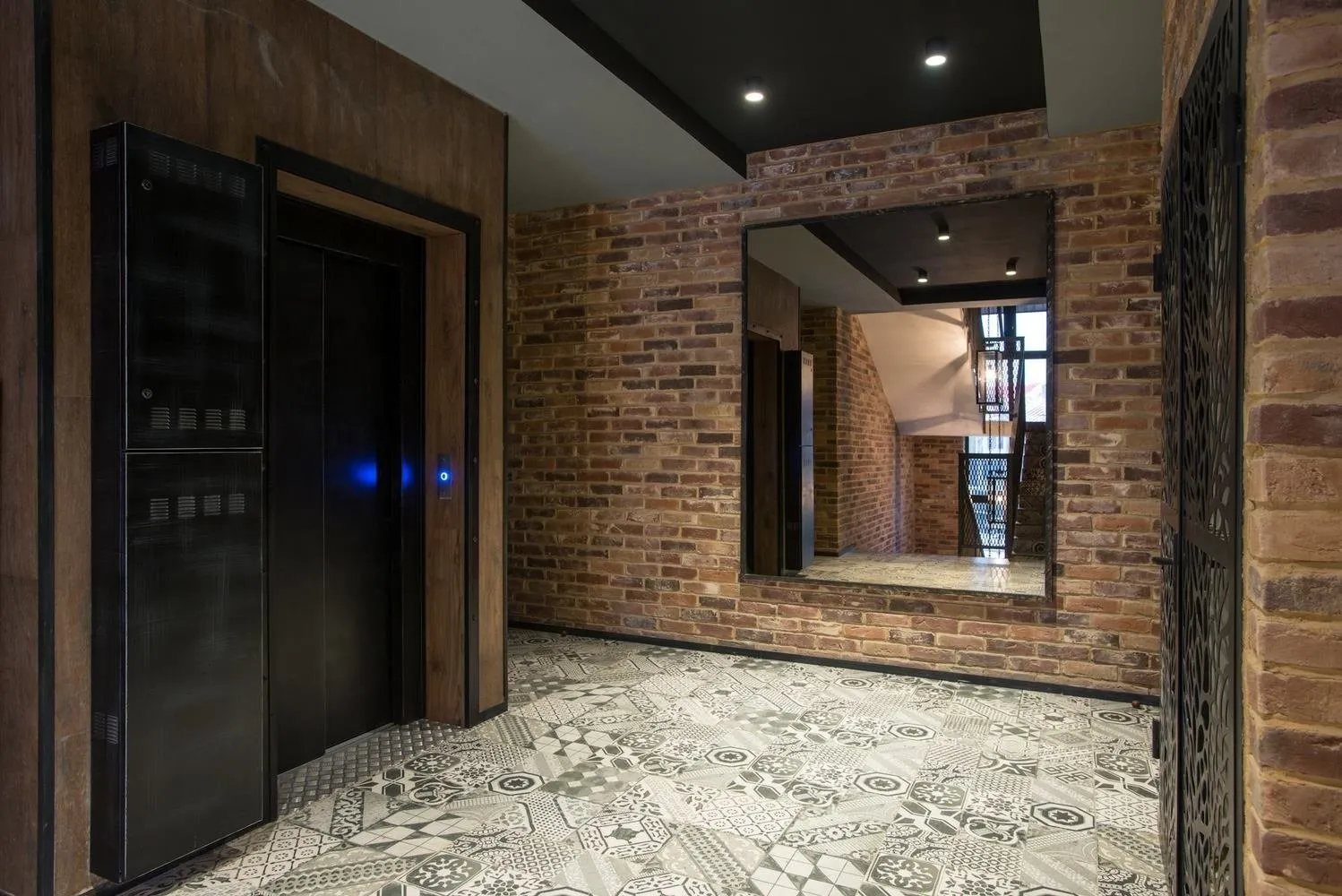

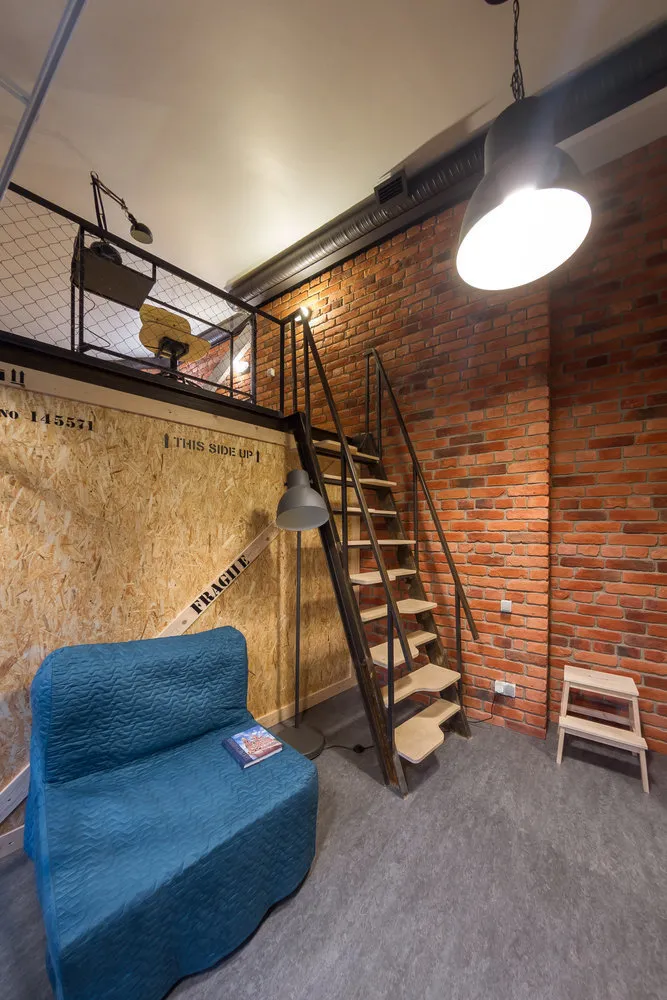
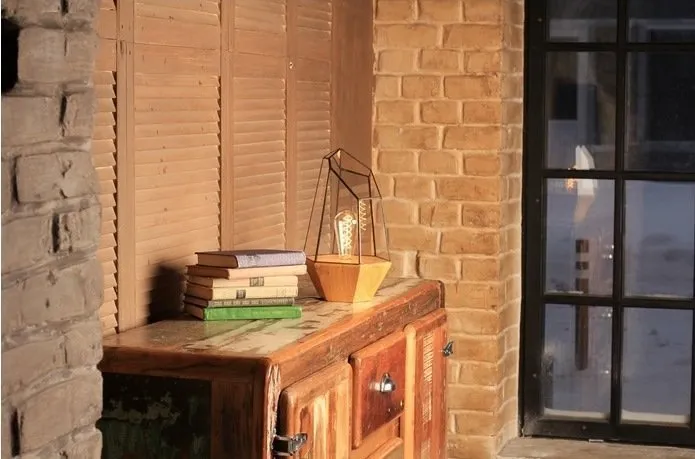

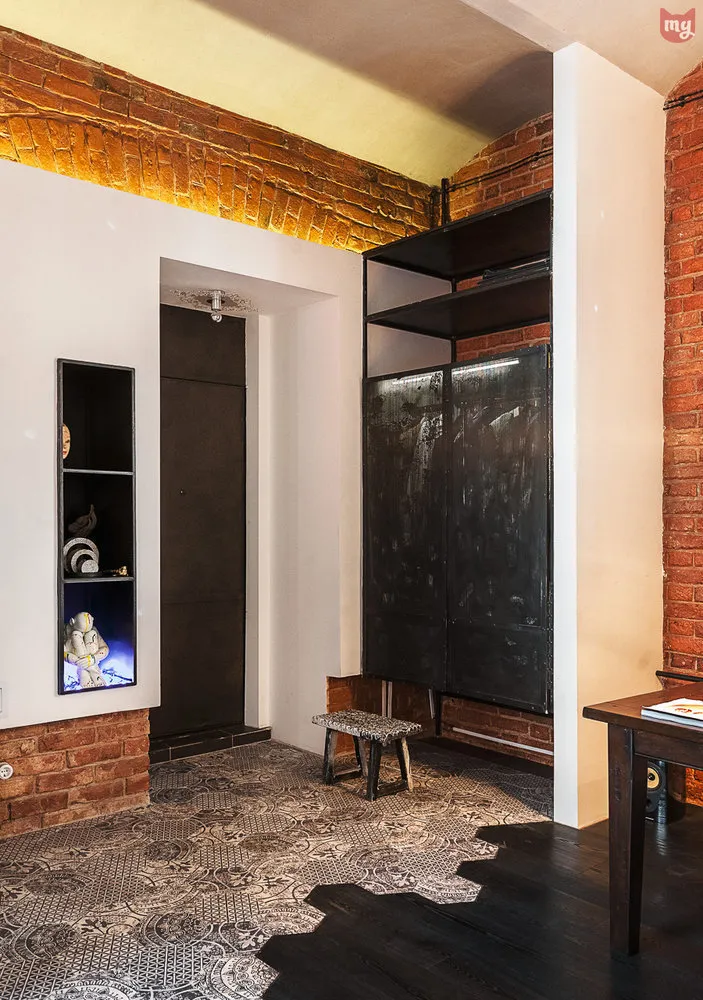
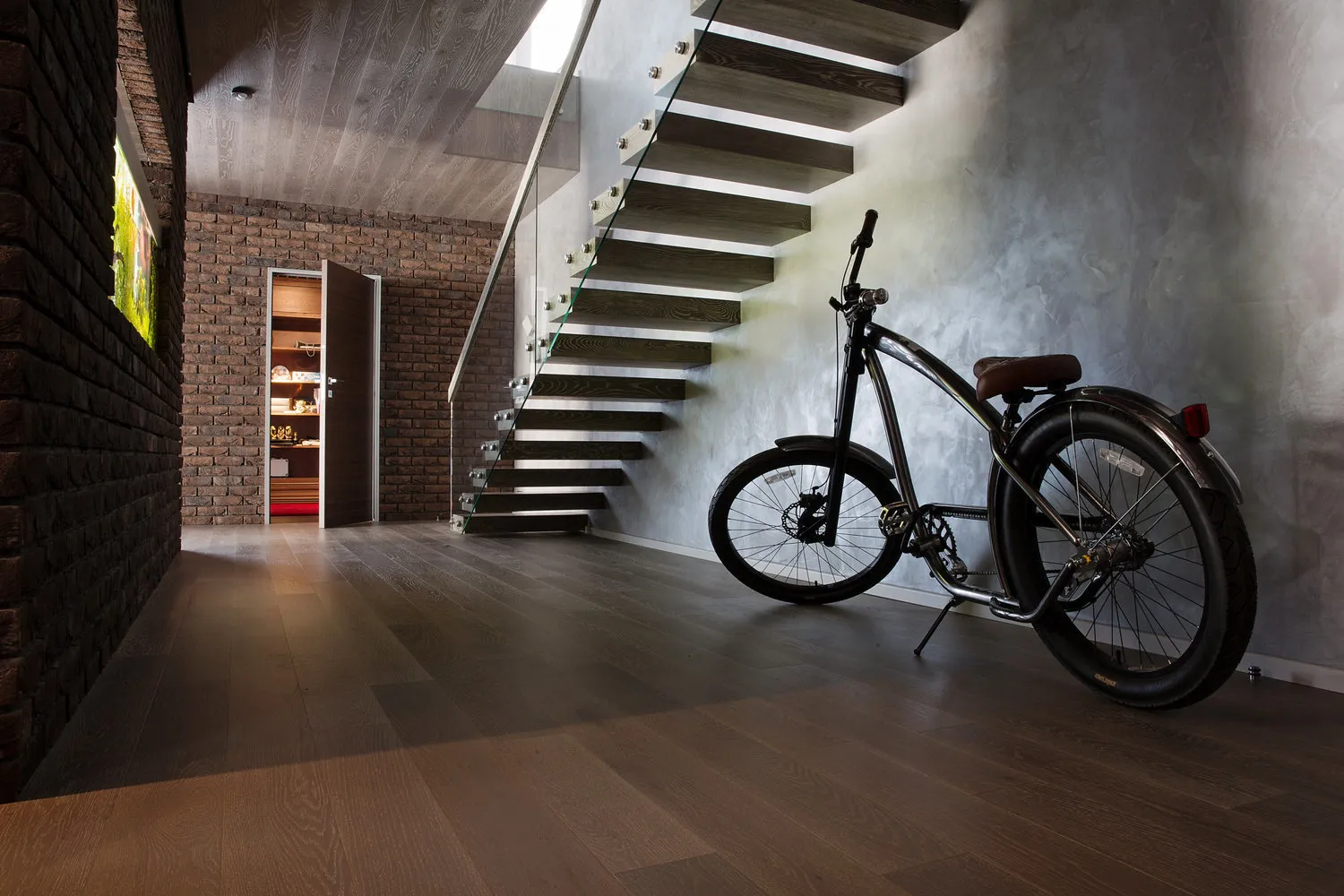


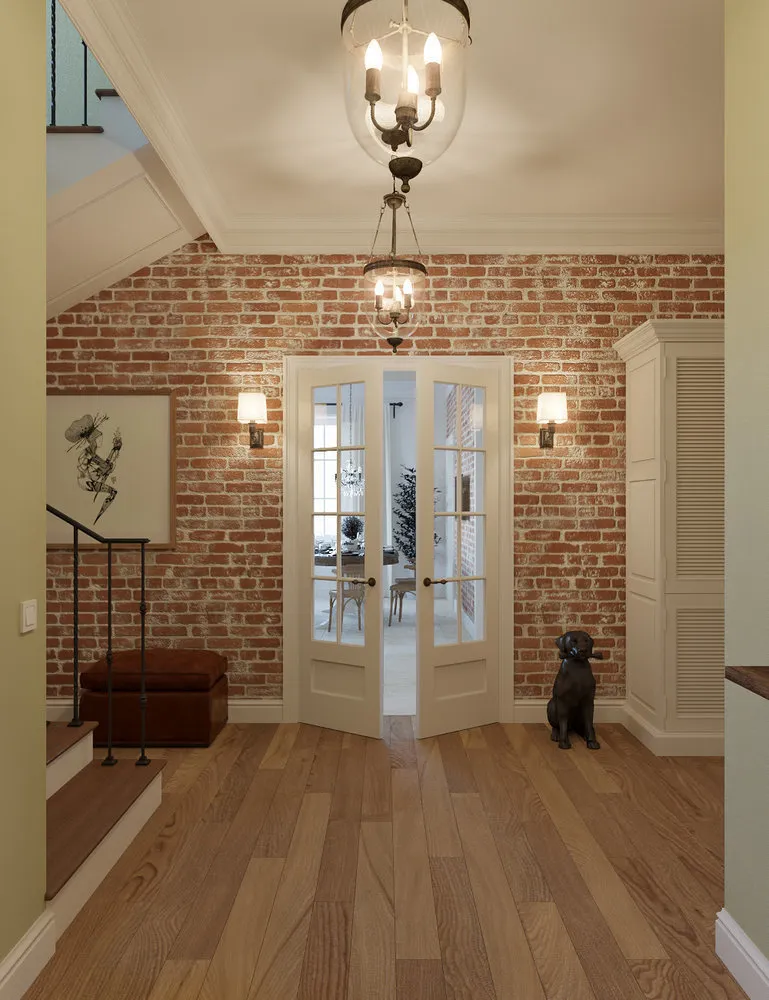


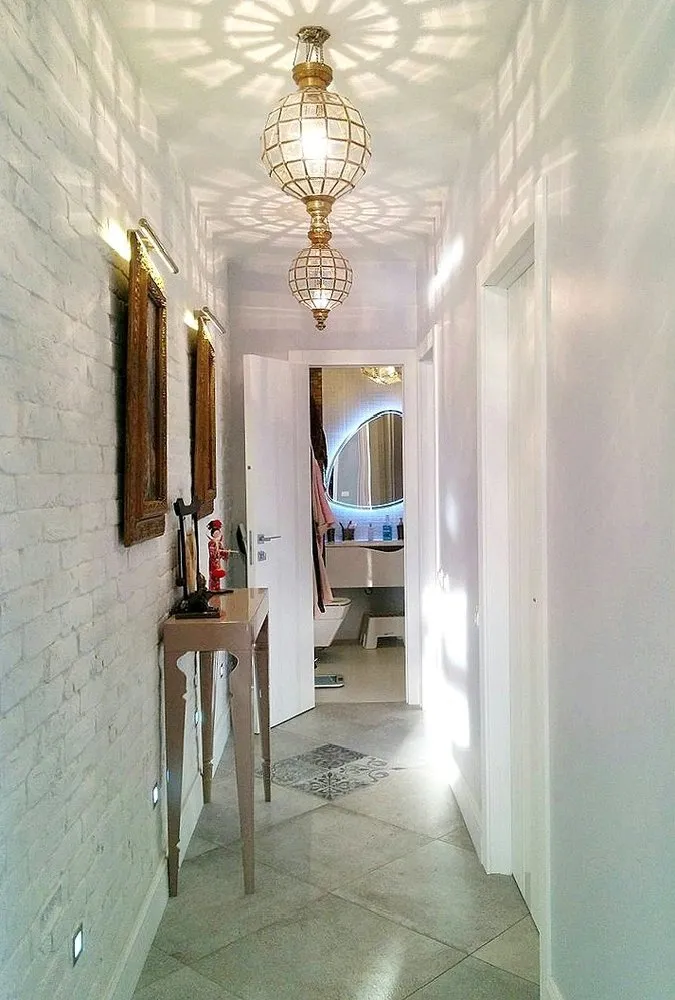
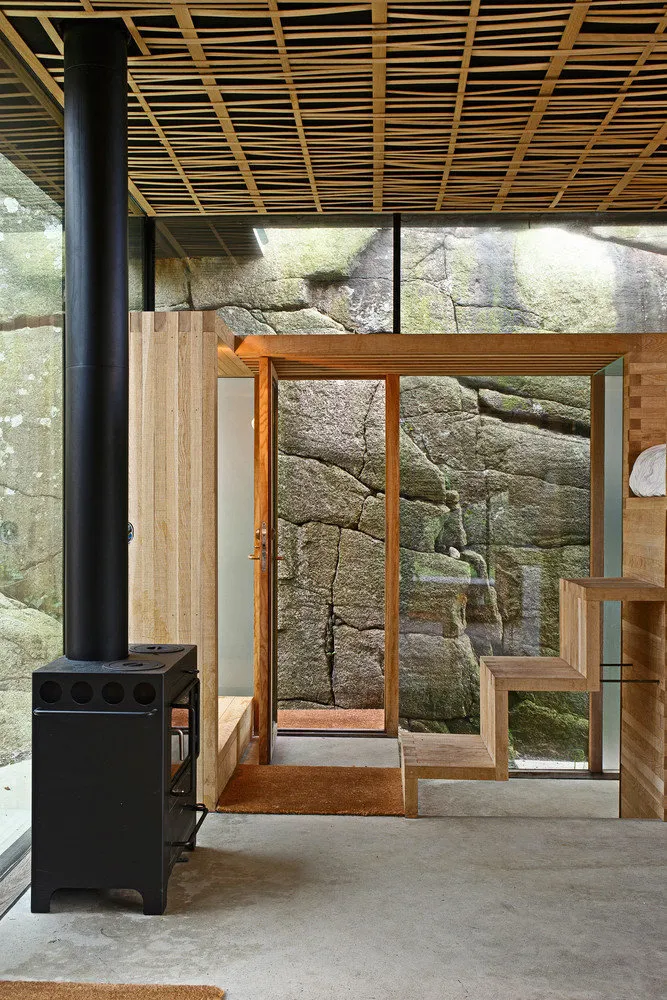


Imitation of natural stone has firmly entered modern home design. The uniqueness of its appearance and harmonious combination with other finishing elements define homeowners' choice in favor of it.
A video clip shows the main principles of applying artificial stone in hallway design
On the cover: Design project by Lyudmila Yurkova.


